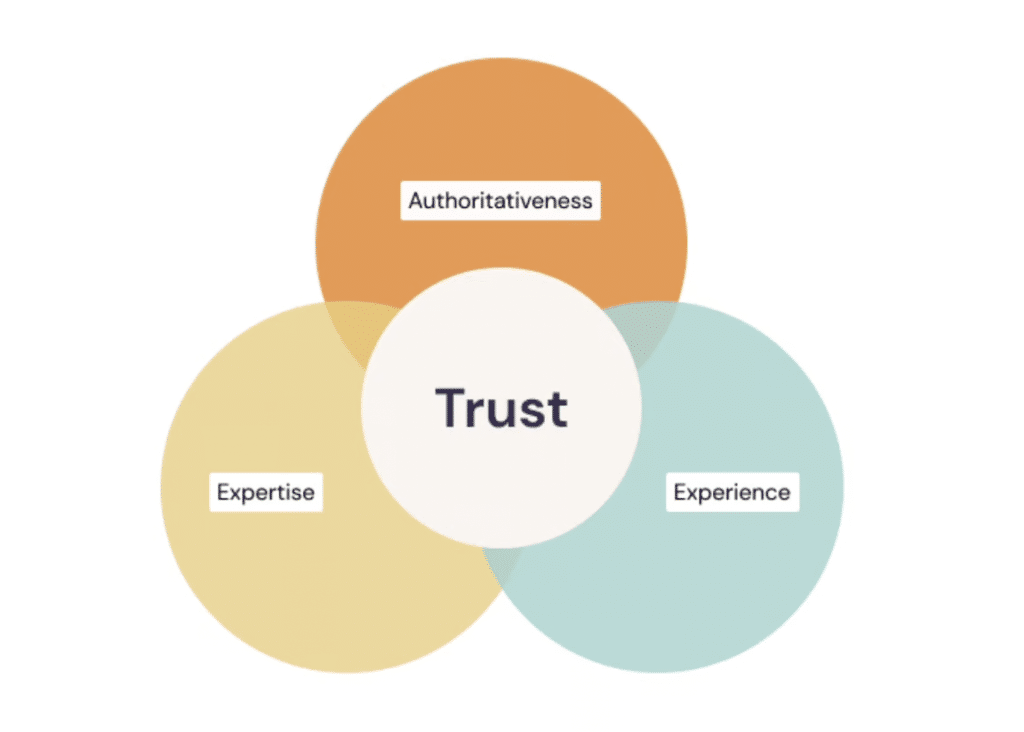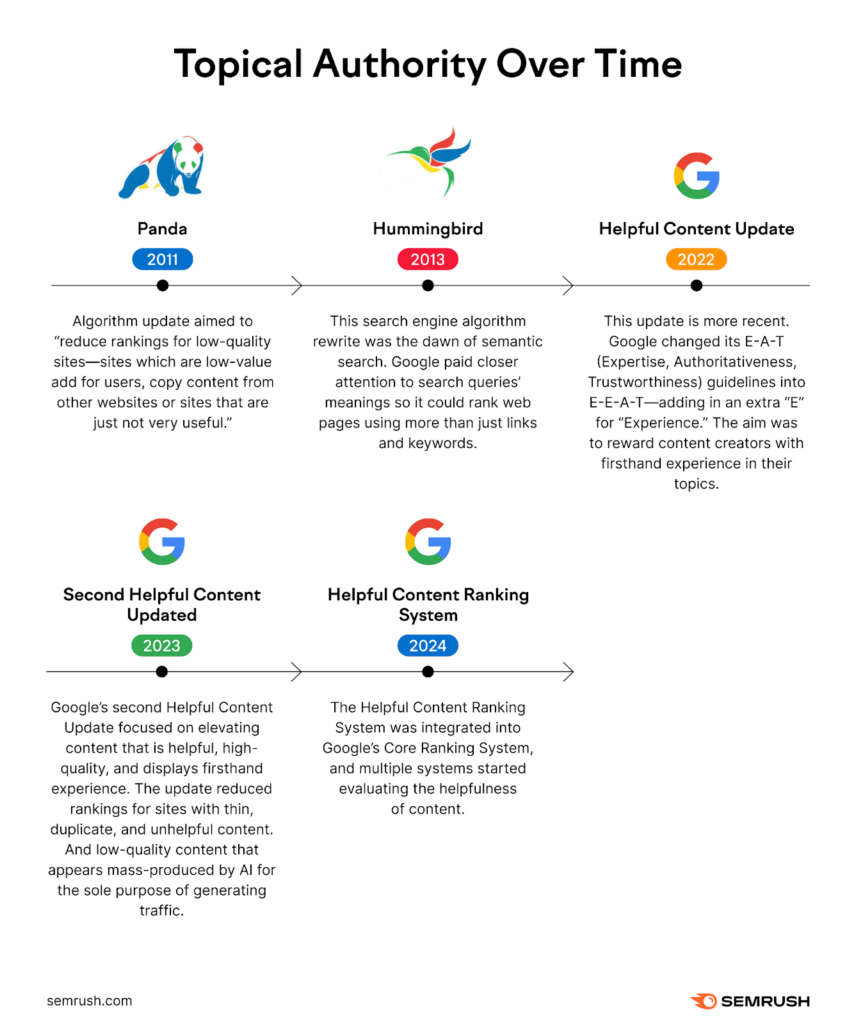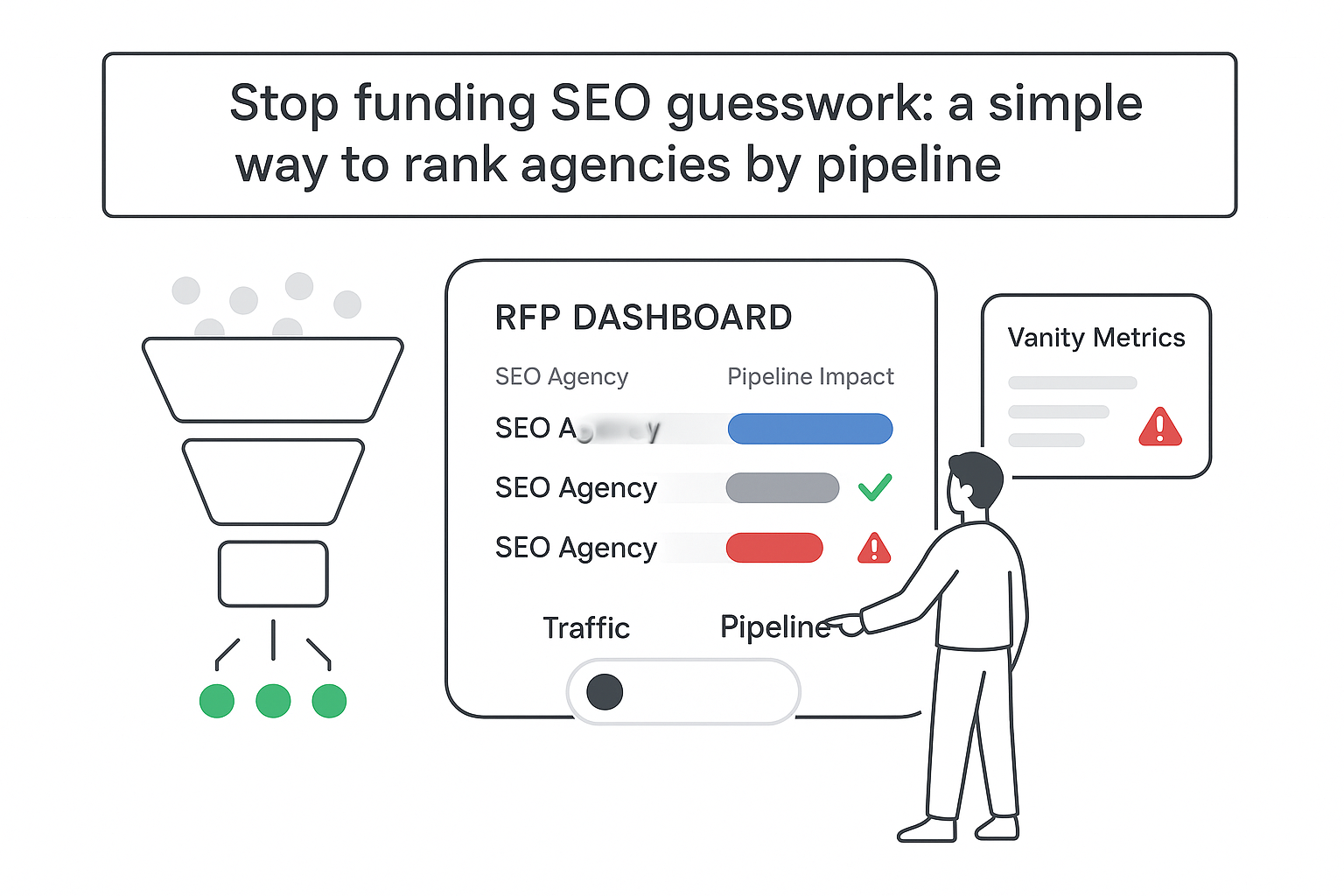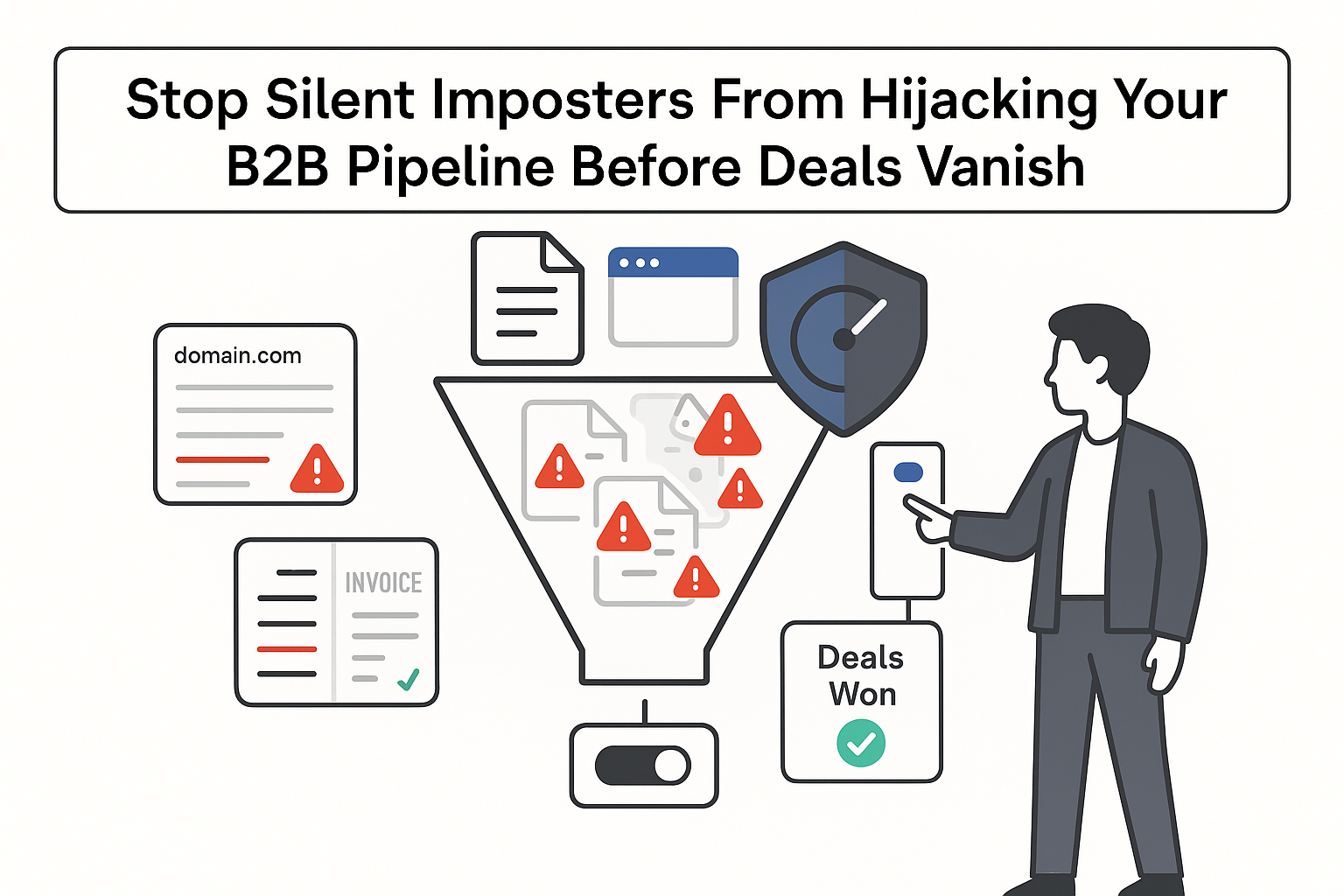How to Turn Your Website into the Web’s “Subject-Matter HQ”
A plain-language playbook for B2B marketers who are tired of renting traffic.
Here’s a secret most agencies bury deep in their slide decks: you don’t need a skyscraper-sized ad budget to outrank bigger brands. What you need is to look, sound, and feel like the single best resource on the topic your buyers care about. That's the core of topical-authority SEO, a concept extensively covered by Semrush. Nail it, and Google does the heavy lifting for you.
Over the last 12 months I tracked 14 B2B clients - SaaS, fintech, and professional-services firms - and saw a pattern emerge. The moment each company built a tightly connected content hub around one revenue-critical theme, organic traffic spiked, paid traffic spend eased, and the CFO stopped wondering why Google Ads were eating half the budget.

- Month 1: 4,200 visitors from ads, 1,100 from organic hub content
- Month 9: 4,400 visitors from ads, 3,740 from hub content
- Cost per qualified lead: down from $82 to $37
The CEO’s verdict? “It felt unfair - like we’d finally found the cheat code.”
Ready to find yours? Let’s break it down.
Domain Authority Isn’t Your Silver Bullet - Topic Authority Is
Most board members glance at Moz or Ahrefs scores and assume “big number good.” Reality check: Google’s crawlers care far more about how comprehensively you cover a subject than how many links point to your home page.
Comparison from two real software vendors:
- Vendor A: DA 76, three half-finished clusters, 42 demo requests a month
- Vendor B: DA 42, ten complete clusters, 58 demo requests a month
Small but thorough beats big and scattered every single time.
Three myths that refuse to die
- “We can’t move the needle until we stack thousands of backlinks.” Strategic internal linking - see Google’s official guidelines - and complete coverage usually create momentum sooner.
- “One monster guide will own the SERP.” Maybe - until buyers start Googling the sub-questions you never answered.
- “Domain authority trumps everything.” The algorithm now grades expertise page by page and cluster by cluster.
E-E-A-T: How Google Decides Whose Advice to Trust
Google evaluates content through four overlapping lenses: Experience, Expertise, Authoritativeness, and Trust (E-E-A-T). Think of them as a résumé for every post you publish. For a deeper dive, check out this practical guide to E-E-A-T.
- Experience - stories, screenshots, first-hand numbers
- Expertise - real author bios (yes, with credentials)
- Authoritativeness - no gaps in the topic, a clean link graph
- Trust - citations, date stamps, and a visible absence of clickbait
Underrated signals that move the dial:
- Signed commentary from an in-house engineer describing how they solved a gnarly client problem
- A public Google Sheet of the raw survey data referenced in the article
- A visible “last updated” line so readers know you’re still watching the post
When those signals pile up inside a focused cluster, rankings ride out core updates instead of yo-yoing every few months.
A Four-Step Cluster Framework That Won’t Overwhelm Your Team
- Pick one high-impact subject and attach a KPI. Pipeline dollars, demo form fills - whatever makes the board smile.
- Create a wave plan. Three months works well: pillar plus three supports in month one, four more supports and a pillar polish in month two, promotion and link outreach in month three. If you need a primer on building an editorial calendar, this article by Daniele lays out the basics.
- Publish and link. Point every supporting piece back to its pillar. Keep outbound links under control so authority stays inside the silo.
- Run cannibalization checks in Search Console. When two URLs chase the same keyword, merge them quickly before they eat each other’s lunch.
Miss one of those steps and growth crawls. Nail all four and you’ll wonder why you ever paid $20 a click.
Keyword Mapping: The Unsexy Spreadsheet That Makes Everything Work
Throw your keyword list into a sheet with five columns: primary query, intent (informational/comparison/transactional), funnel stage, target URL, and notes. Labeling terms BOFU or TOFU may feel like jargon, yet it removes 90 percent of executive confusion. For help writing airtight content briefs, Gianni’s walkthrough is gold.
Expect to spend two solid hours mapping your first 50 phrases - after that, the process flies. Ahrefs, LowFruits, and AlsoAsked are plenty; save the fancy AI tools for later.
The Pillar Page: Anchor, Not Dumping Ground
A pillar should guide, not smother. Keep its word count to roughly one-and-a-half times the combined length of your supports or your smaller posts will never rank.
Skeleton layout
- H1 - Core topic
- Definition (with a jump link)
- Benefits (CTA)
- Step-by-step process (links to deep dives)
- Pricing (CTA)
- Case studies (CTA)
Spacing CTAs after value sections, instead of stacking them on top, lifted form fills 21 percent for one fintech client. Small change, big win. For more context on why long-form depth works, see this look at content evolution.
Silo Structure: Flat vs. Nested
Flat
/topic/
/topic-sub-1/
/topic-sub-2/
Quick, easy, but loosely connected.
Hierarchical
/topic/
/topic/sub-1/
/topic/sub-1/tooling/
/topic/sub-1/budgeting/
It takes more planning but sends crystal-clear topical signals. Don’t bury anything deeper than three clicks and run Screaming Frog monthly to catch orphan pages. If you’re curious how Google discovers new content, its official search documentation is worth a skim.
Semantic Maps & Light Outreach: Quality Over Quantity
Draw an entity map - think mind-map meets glossary. “DevOps outsourcing” might branch into stakeholders (CTO, engineering manager), metrics (deployment frequency, MTTR), and barriers (legacy systems, time-zone handoffs). Each branch deserves at least a section or a standalone article.
Then, instead of spamming every site with a pulse, email 15 relevant blogs:
- Offer one stat or quote they haven’t covered.
- Ask for a mention only if it fits their narrative.
- Send five pitches a week; it’s polite and sustainable.
Quarterly, revisit the map, patch new jargon, and refresh slipping URLs before spinning up brand-new content.

Wrapping Up
Topical authority turns your blog from a scattered notebook into a reference library. Do the groundwork once and every new post slots neatly into the system. Google sees order. Buyers see expertise. Finance sees declining acquisition costs. And you? You finally get to stop feeding the paid-traffic meter and start compounding real search equity. If you need a broader refresher on why SEO positioning matters, this overview is a good companion read.







.svg)